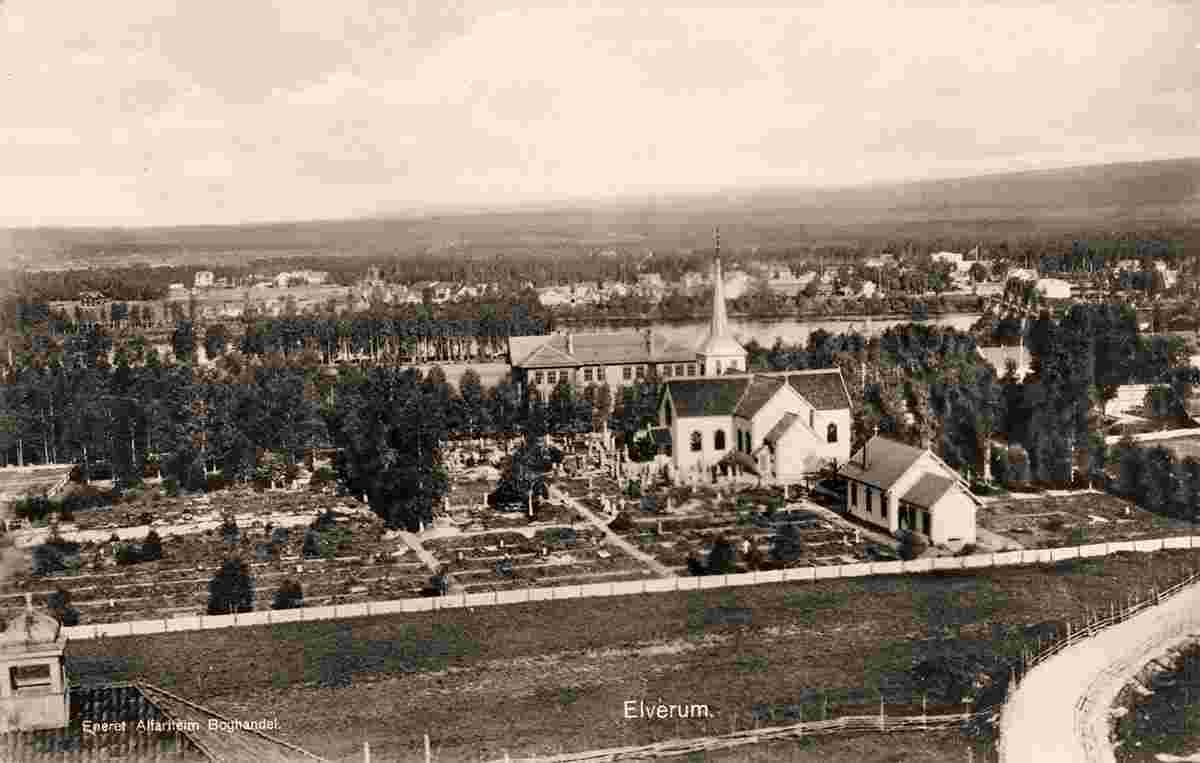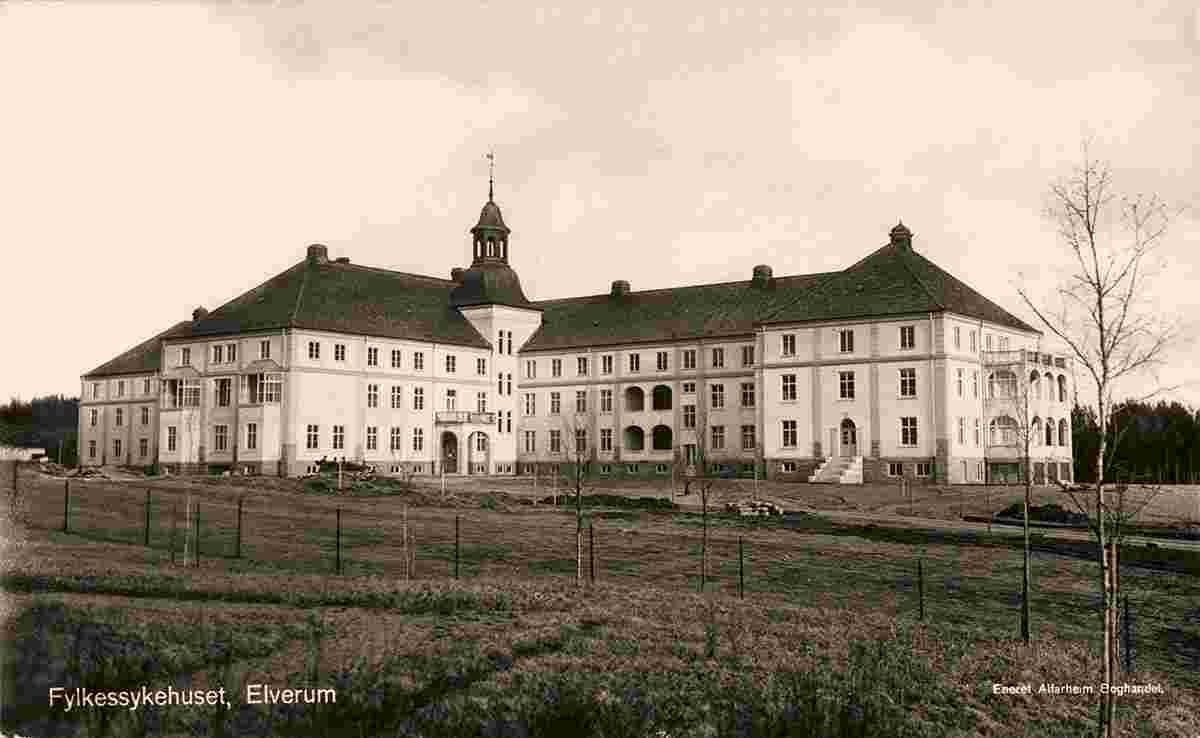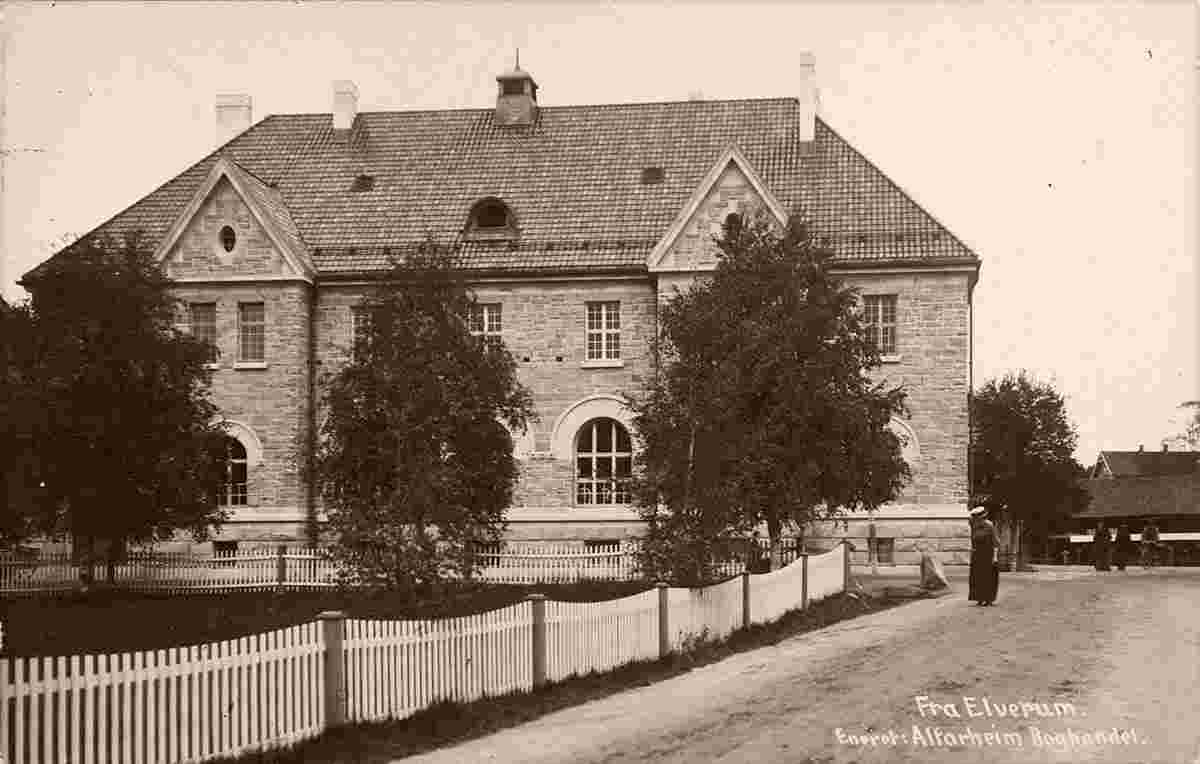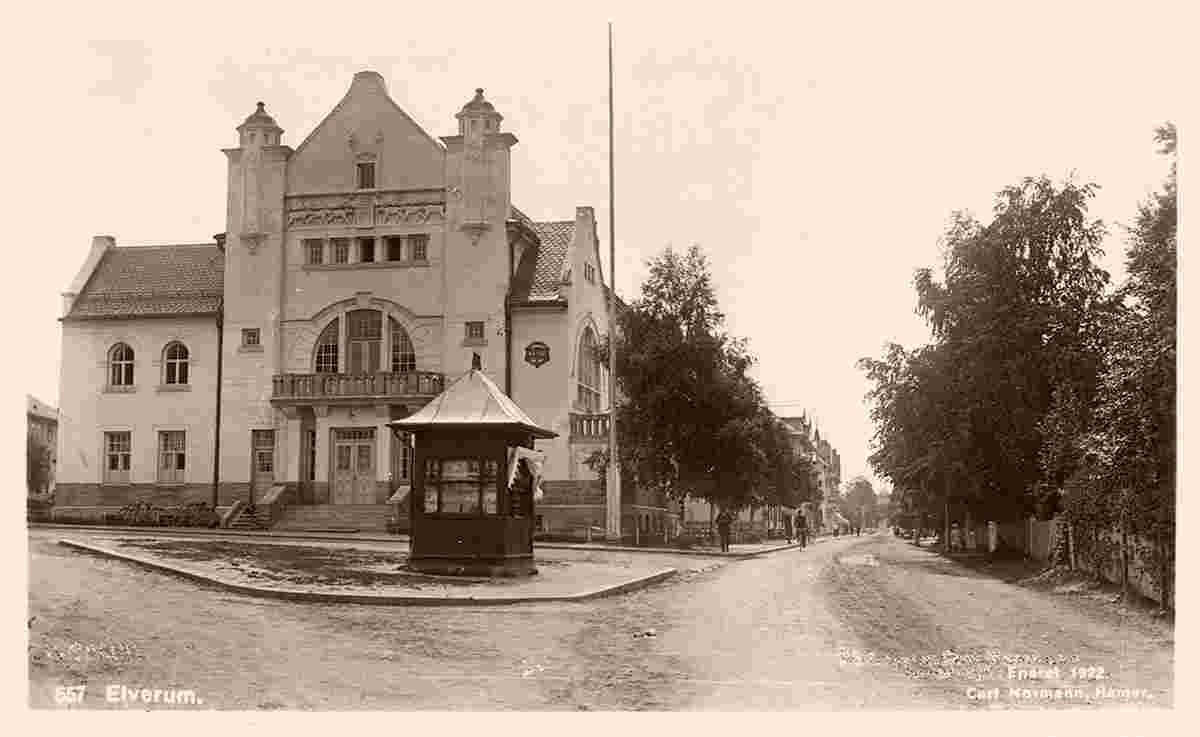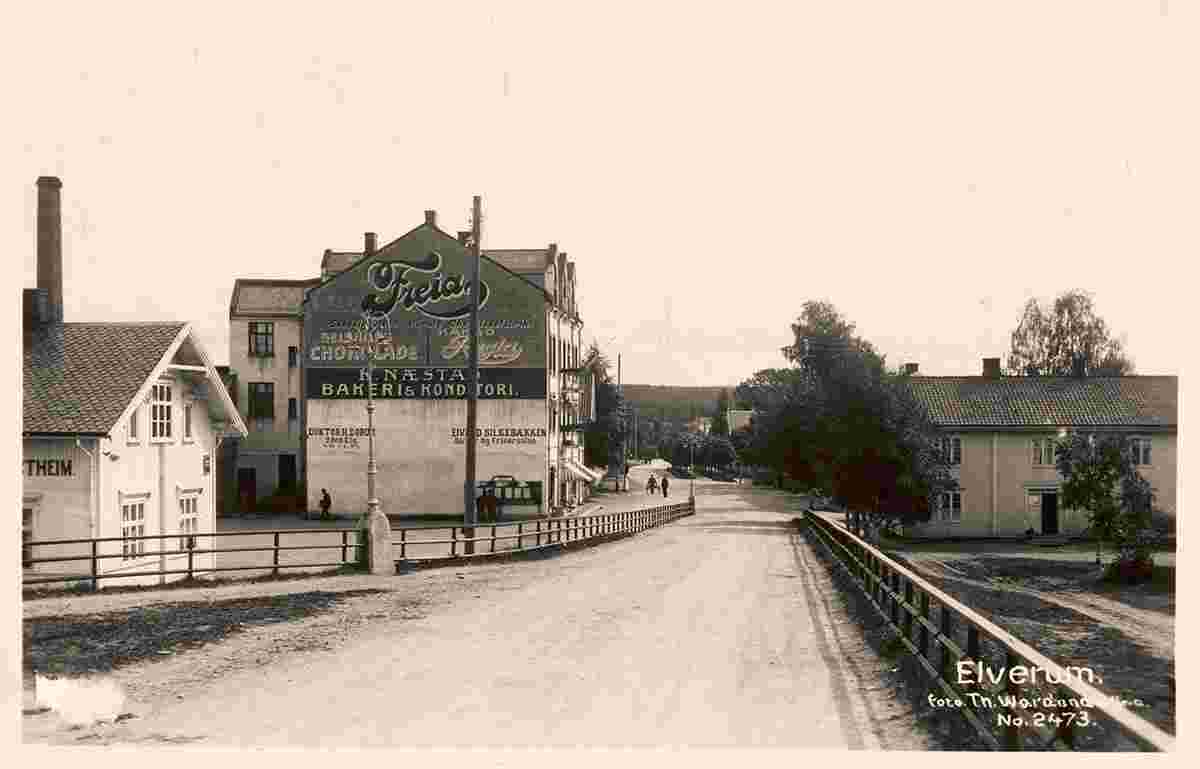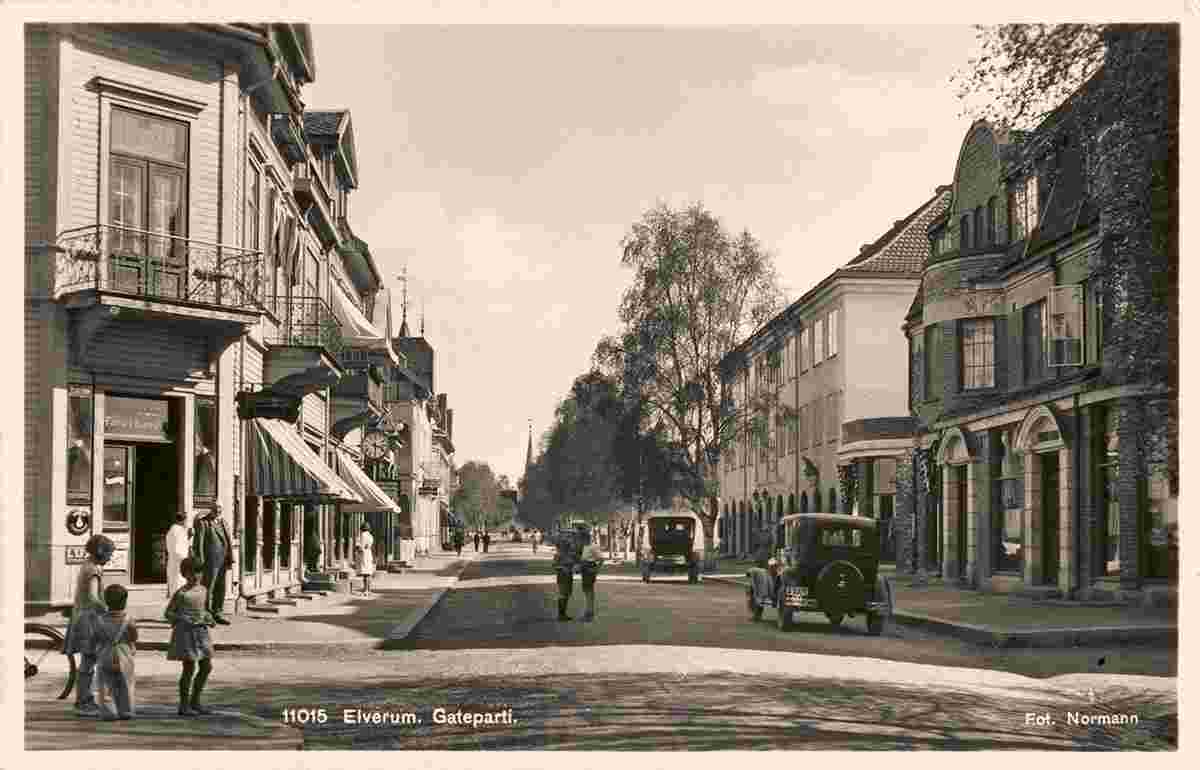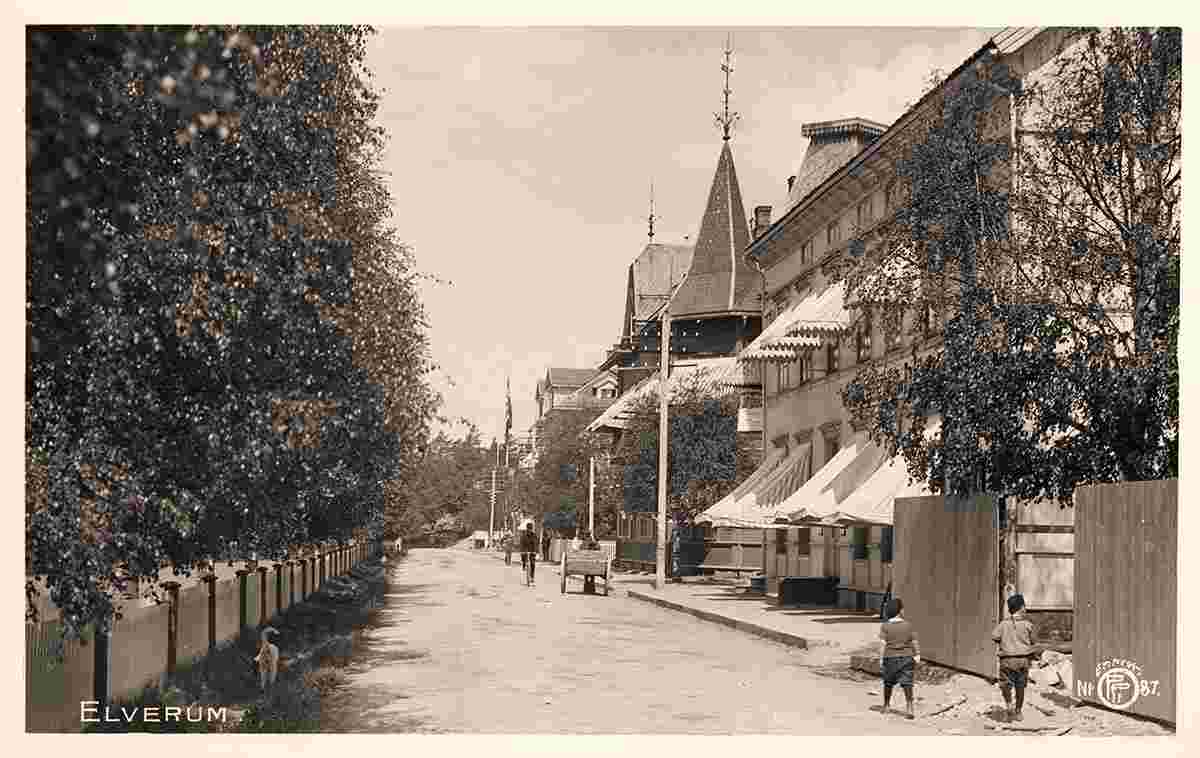Historical and old photos of Elverum, Innlandet
HistoryMilitary tiesDuring the Nordic Seven Years' War (1563–1570), Swedish troops invaded Norway in a number of locations, including a number of incursions into Østerdalen. In 1563, Norwegian troops stopped the Swedish advance at Elverum, which provided a strategic point since it lay on both north-south and east-west trade and travel routes. The parishes of Idre and Särna originally belonged to Elverum. But they were occupied by Swedish troops in 1644, and since then lost to Sweden. Construction of fortifications started in 1673 during the Gyldenløve War as Hammersberg Skanse. It was renamed Christiansfjeld Fortress in 1685 by King Christian V of Denmark during his visit to Hammersberg Skanse on June 14. Although the fortress was manned through the Great Northern War, the city was spared major battles. In 1742, Christiansfjeld Fortress was closed. A Norwegian infantry regiment, the Oppland Regiment, was formed in 1657 and Elverum became a garrison town. The area of population east of the river called Leiret (literally the camp) adjacent to Christiansfjeld Fortress was built up by soldiers as well as the merchants and craftsmen who settled nearby. Even to this day the area of Elverum central areas east of the river is referred to as Leiret. In 1878, Terningmoen at Elverum became the home base for the Oppland Regiment and an infantry school was founded here in 1896. The Oppland Regiment had a history which included courageous involvement in combat from the Swedish wars of the 17th century through the German invasion of Norway in 1940. As part of the general restructuring, the unit was disbanded in 2002. Today, Terningmoen hosts several sub units within the Norwegian army and the Home guard. Regional townIn the Danish-Norwegian period, Elverum was the location for a bailiff (fogd), a judge (sorenskriver), a head pastor (prost), and numerous military officers. It became important as a market town as well. In 1570 Hamar Cathedral in Hamar was burned and Hamarhus castle was destroyed by the Swedish armies during the Seven Years' War with Sweden. Hamar lost its city status, leaving no kjøpstad, or official market city, between Christiania and Trondheim. Eastern Norway needed an organized market for trading goods. The Grundset market (Grundsetmart'n) in Elverum municipality grew to meet the need. It is recorded as existing in the 17th century, and in 1765 the owner of Gaarder obtained special market privileges from the king, to take place six miles north of the population center of Elverum on his estate. By 1767, it was described as Norway's largest and most famous market. In the first week of March, for almost 300 years, the folks of the district met to trade and to celebrate. People from Gudbrandsdal, Oslo, Trøndelag, and Sweden also regularly came to Grundsetmart'n. The Grundset market was finally abandoned in 1901, when pressures of the railroad and other markets made it superfluous. The railway connecting Oslo and Trondheim passed through Elverum in 1877. World War IIElverum municipality served as a temporary capital of Norway during the World War II German invasion. On 9 April 1940 Norwegian troops prevented German parachute troops from capturing Norway's King Haakon, Crown Prince, and Parliament while the Parliament was meeting to issue the Elverum Authorization, authorizing the exiled government until the Parliament could again convene. On April 11, shortly after the government's refusal to submit to German terms, the center of Elverum was reduced to ashes. Origin: en.wikipedia.org | ||||||||||||
 |
Historical and old photos of Elverum, Innlandet
Historiske og gamle bilder av Elverum, Innlandet |
| Main page • Countries of Europa • Cities of Norway |
| Robinson Rd, CB 13862 Nassau, NP, The Bahamas |

